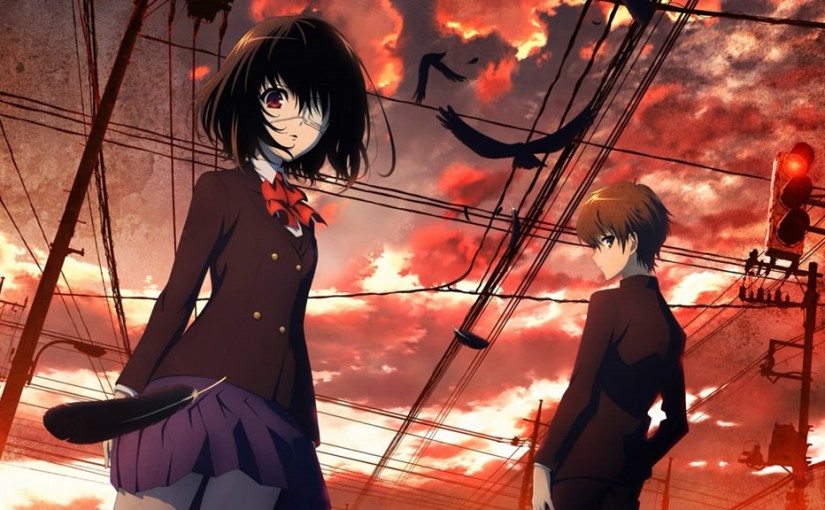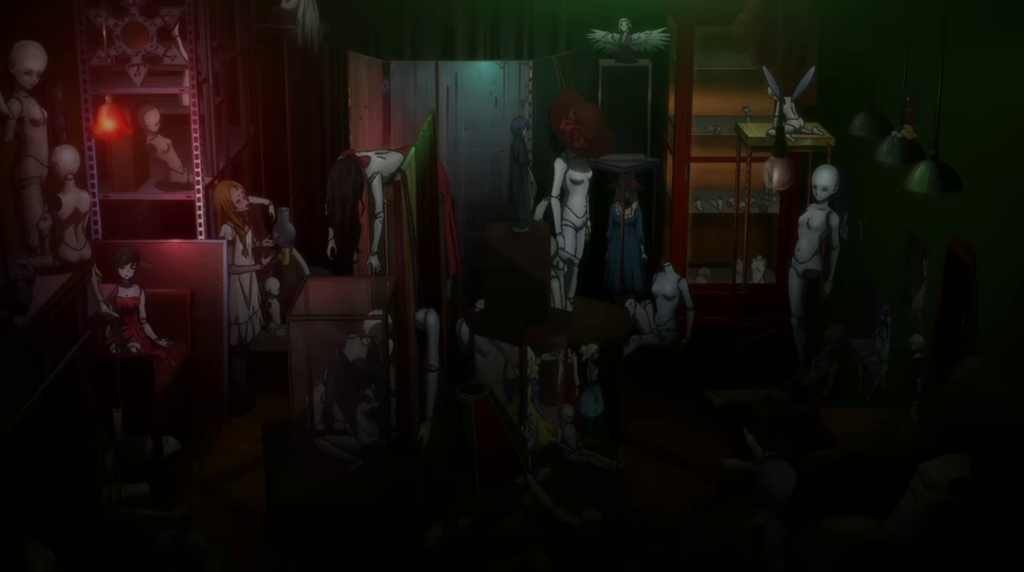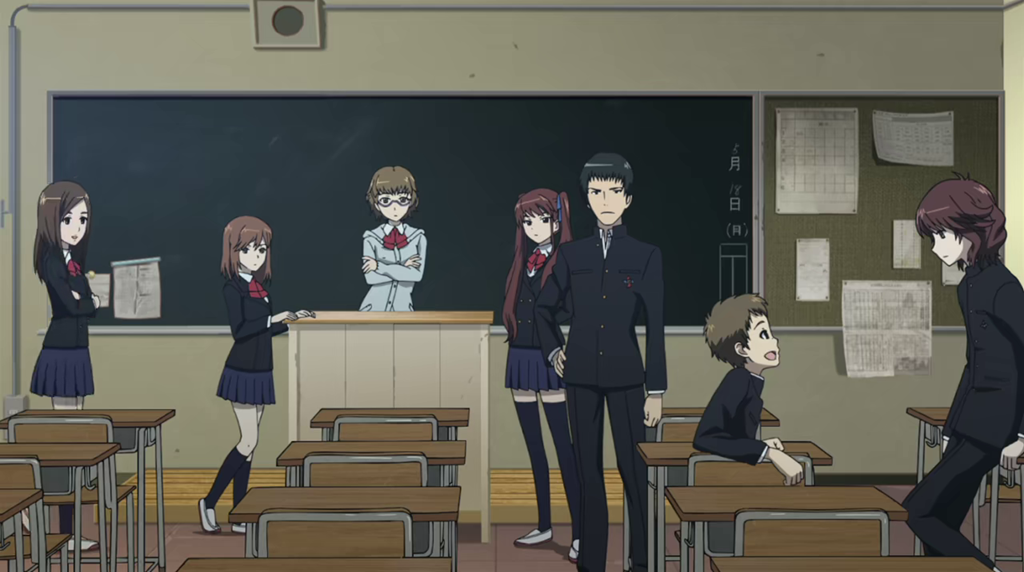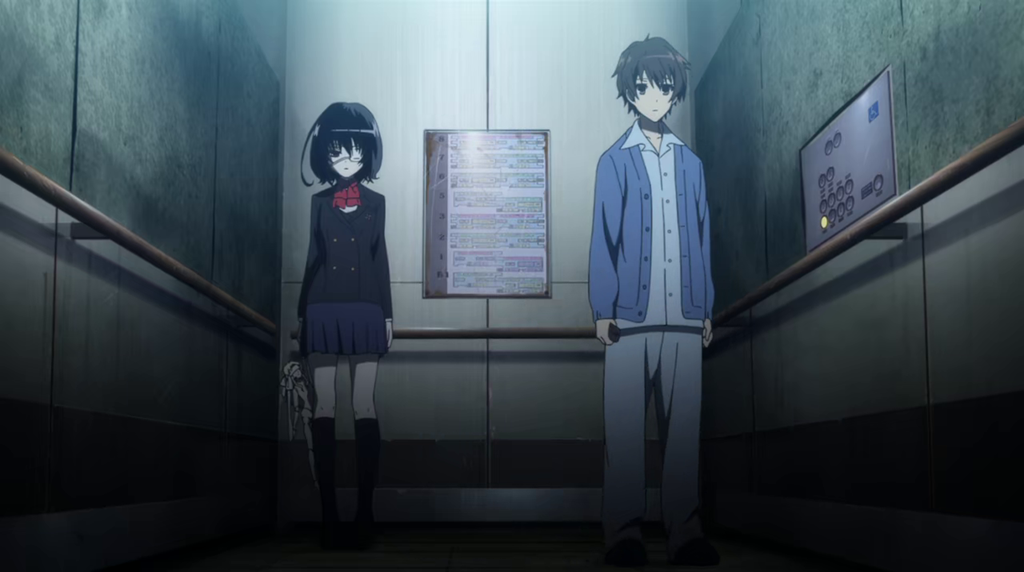アナザー (Another) is an anime adaption of a light-novel written by Ayatsuji Yukito (綾辻 行人), award-winning Japanese Mystery/Horror author. The anime was produced by Progressive Animation Works (株式会社ピーエーワークス) as a single-cour of 12 episodes (25 minutes each, for a total run of five hours), and provides a fine example of Japanese horror.
The Setting
The story takes place in the fictional small city of Yomiyama (夜見山) in the year 1998. Yomiyama is located on the Yomiyama river, a fair distance from the hustle and bustle of big cities and lacks much of the urban sophistication of, for example, Tokyo.
Discarding a few necessary premises for the story, such as Yomiyama itself, it otherwise takes place in the real world – just in a fictional locale.
The Story
(no real spoilers)
The central character is Sakakibara Kouichi (age 15). His mother died in childbirth and his father travels to India for several months as a part of his university research work. Kouichi goes to stay with his grandparents in Yomiyama, his mother’s home-town. Kouichi is transferred to his mother’s old school, Yomiyama North (夜見山北中学校), in class 3-3 (senior year, class 3).
Before his transfer is finalised, he is hospitalised with a collapsed lung, and spends some time recovering, unaware that the class he is to enter labours under a particular and deadly curse, originating from events that took place in class 3-3 26 years before, in 1972.
Kouichi will be swept up into events, and terrible things will happen. Terrible things indeed.
Cautions and triggers
(some slight spoilers)
アナザー is creepy, and much creepier still if you find dolls troubling. Considering the subject-matter, there’s surprisingly little in the way of nudity or even underwear (something that frequently accompanies horror shows). There are a couple of nipples on display, but they’re only on dolls.
And then we get to the gore. Initially, it might seem like there isn’t going to be any, but there is. When they happen (with increasing frequency as the story develops, starting from episode three), deaths are gruesome, graphic and vivid. They are not nice deaths. Several occur at the end of episodes, which means that you may see them a second time at the beginning of the next episode.
If deaths involving suicide, boats, fire or elevators are triggering for you, you would do best to avoid this series. I don’t believe any of the other deaths are especially triggering, but as I said before, none of them are nice deaths.
Notes and observations
Japanese horror has some significant differences from your common-or-garden variety Hollywood horror. While Hollywood horror usually requires a special place (a haunted house, abandoned asylum, etc), Japanese horror invades and subverts the familiar. Hollywood horror is take-away, while Japanese delivers.
By the same token, Hollywood supernaturals (curses, ghosts, what-have-you) rarely follow any discernable restrictions, whereas the Japanese kind are bound by intricate and self-consistent rules (though those rules are not human rules).
アナザー demonstrates these particular qualities very well, and the writing and direction really make it shine. Viewing the series in hindsight, every cut seems well thought-out, with great care to determine what is and what isn’t shown on the screen from moment to moment. The makers are as particular about what we don’t see and don’t hear as they are about what we do.
Indeed, if you pay careful attention to the shape of things not shown, it is possible to puzzle out certain information prior to their narrative reveals – but you are unlikely to do so on a first viewing. On a first-viewing you should enjoy the story. A second-viewing is enjoyable simply on technical merits.
The soundtrack is effective, subtle or jarring as circumstances require. You’ll probably hardly notice it. By contrast, though, the opening theme doesn’t quite feel to me like it is actually actually a very good fit. Too loud and the wrong tempo for the story (though the lyrics are disturbing enough in their own way).
The spoken Japanese is well-voiced, clear, and largely uncomplicated. While the show has also been released dubbed into English, the English vocal work really lets the show down, unfortunately. I would recommend watching it with the Japanese audio-track and English subtitles which, while they distract a little from the onscreen visuals, listening to the Japanese voices does a lot to convey the tone, which the American nasal drawls regrettably spoil.
There is also a live-action movie adaption of this story, weighing in at 108 minutes – however cramming 300 minutes of story into just over 100 necessitated some substantial rewriting, and regrettably the resulting live-action film doesn’t really make much sense unless you have already read the book or seen the anime series.
Recommendation
If you’re already a Japanese horror fan, this is a show not to miss. If you like horror generally (particularly if you like the written kind), again, this should serve you well (if some of the visual gruesomeness doesn’t turn you off). A good introduction to Japanese horror, and worth watching a second time on technical merits.




